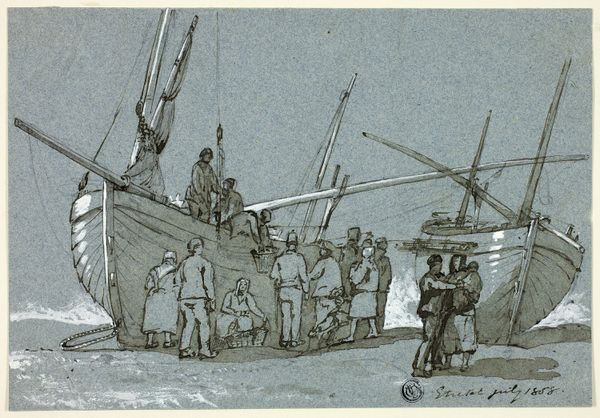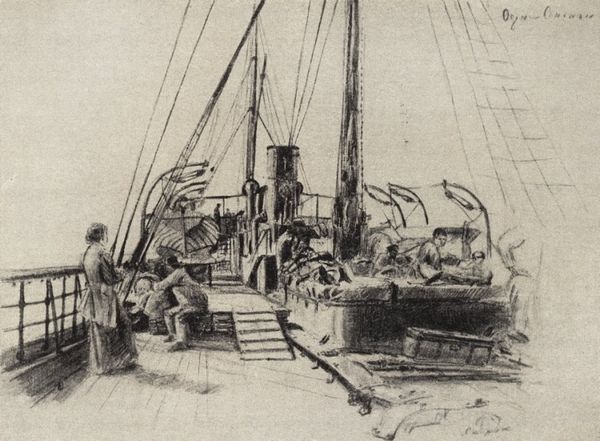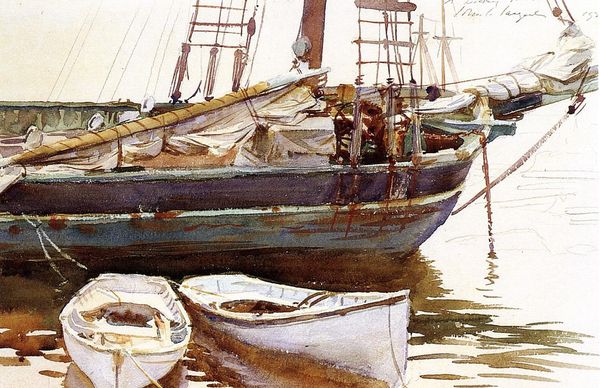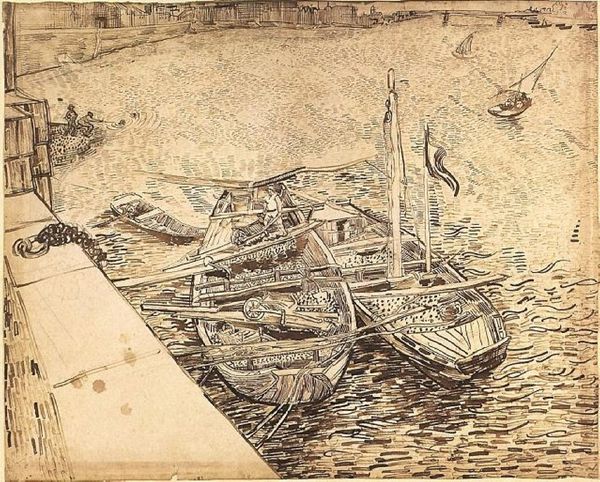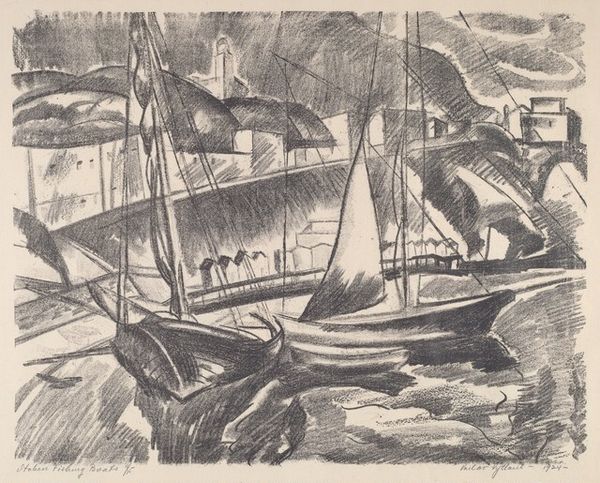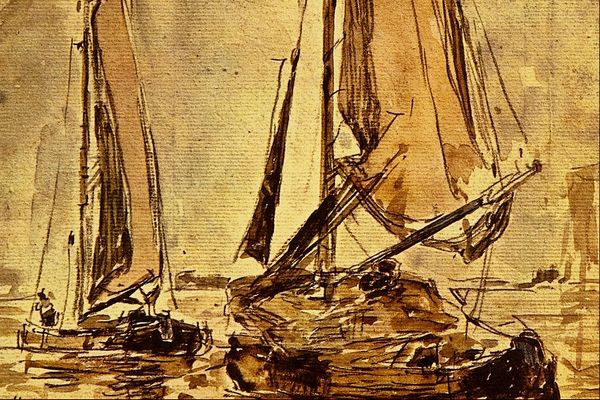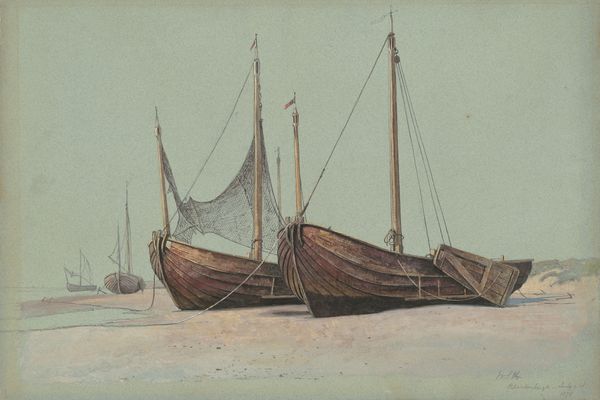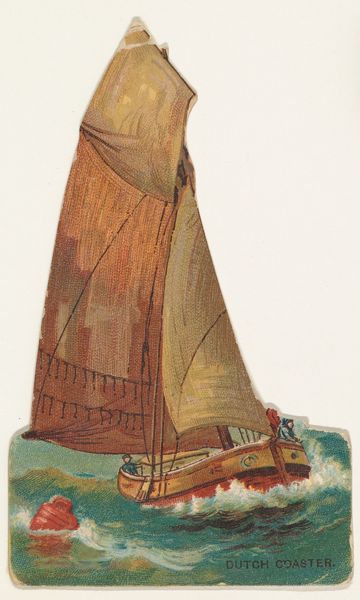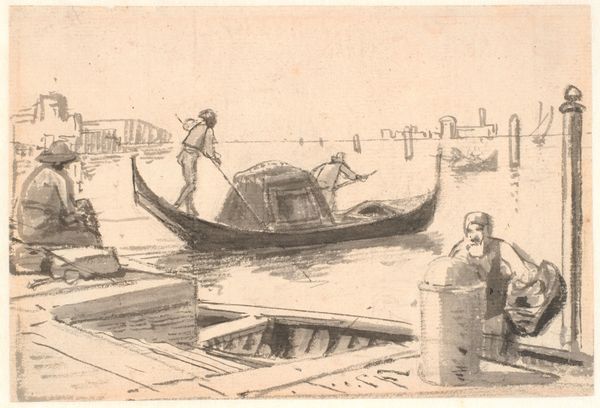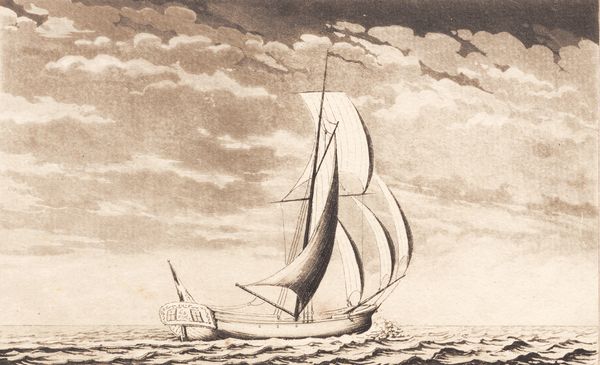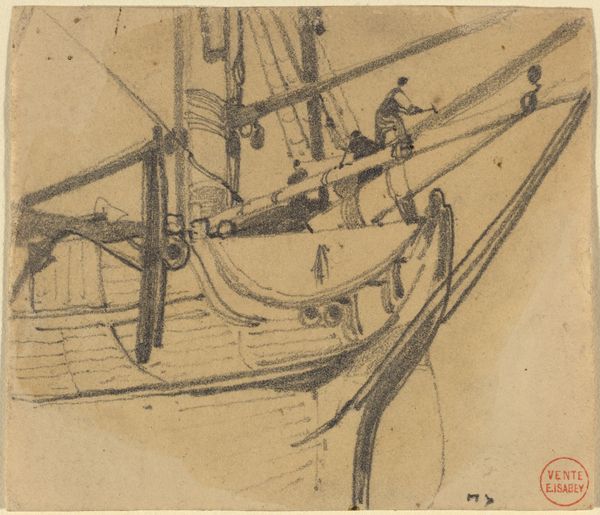
painting, oil-paint
#
painting
#
impressionism
#
oil-paint
#
landscape
#
geometric
#
line
#
cityscape
#
post-impressionism
Dimensions: 81 x 65 cm
Copyright: Public domain
Curator: Georges Seurat's "Harbor in Honfleur," painted in 1886, captures a tranquil port scene. The oil-on-canvas work currently resides at the Kröller-Müller Museum in the Netherlands. Editor: My first impression is that the painting has a certain calmness, almost like looking at a faded memory. There is an industrial element with these ship parts, but somehow that is rendered gentle by Seurat's handling. Curator: The careful brushstrokes, very linear, create a stillness—they direct our gaze across the scene almost as if we’re observing a sacred ritual. One can see how lines were so integral to his artistic style. It is amazing how such small marks and calculated compositions produce such a cohesive symbolic structure! Editor: Absolutely. The "structure" feels like it's built on socio-economic pillars that supported trade and commerce. Ships coming into port, filled with global wares; consider who profited, who suffered, what unseen histories linger here. Seurat’s aesthetic vision often omits direct signs of labor, so how can we acknowledge what is invisibly there, influencing what he chooses to include? Curator: Perhaps he's abstracting that human story through symbols – the anchor representing hope and stability, the lines of the rigging symbolizing connection and far-reaching endeavors, while the geometric lines perhaps speak to human-built progress? There is a subtle push-and-pull here between hard geometric shapes, the straight edges that people have constructed, against the soft curves of the ships and water. Editor: It's easy to slip into romanticism when regarding harbor scenes; however, let’s question whose labor built that pier, sailed those ships? Did Seurat see beyond bourgeois leisure to portray the foundation of a new kind of society? The Impressionists especially liked to remove human activity from some landscape or architectural scenarios like this. I'm always drawn to what is absent, and wonder who has been erased in these kinds of images. Curator: That tension you mentioned between presence and absence opens many doors! For me, thinking of Honfleur’s importance as a trading port lends weight to those absences – a powerful reminder that the quiet image belies unseen stories of travel and work across countries and cultures. Editor: Yes, it invites us to really see beyond the immediate calm, as that quiet industrialization played such a huge role at the time. A lot going on just below the surface, as it were.
Comments
No comments
Be the first to comment and join the conversation on the ultimate creative platform.

